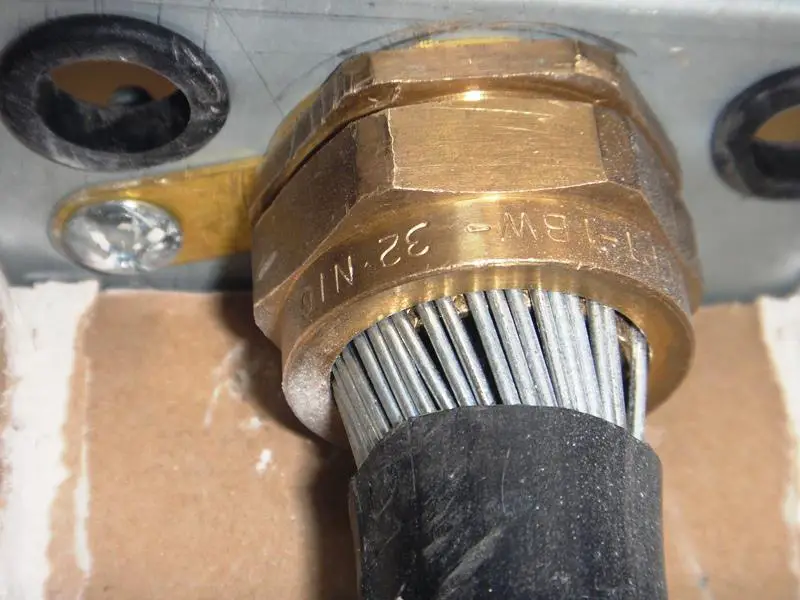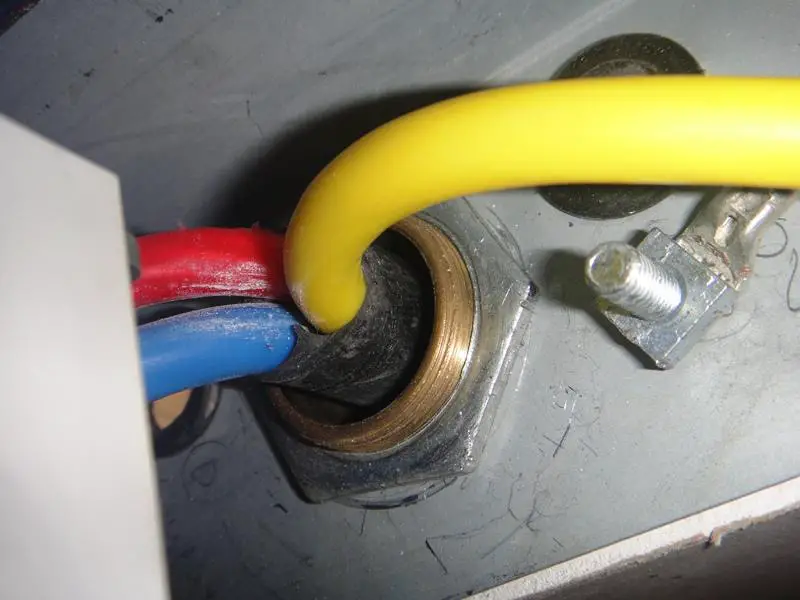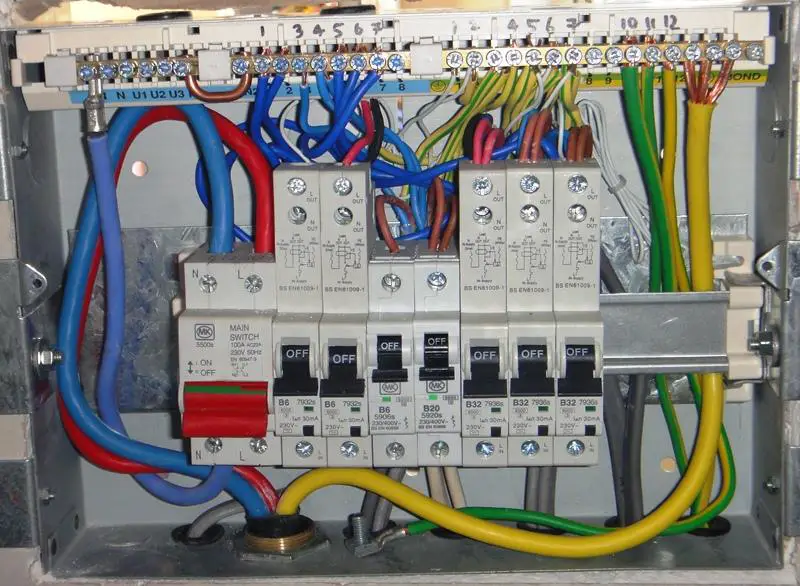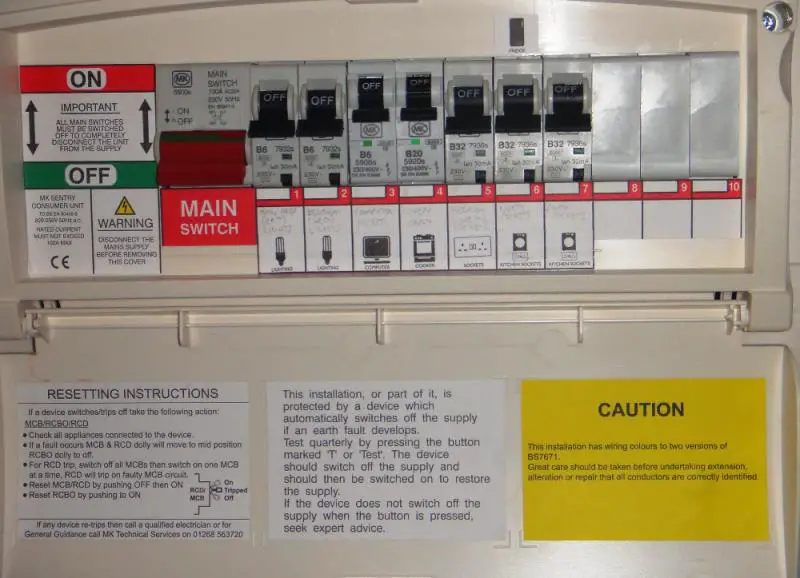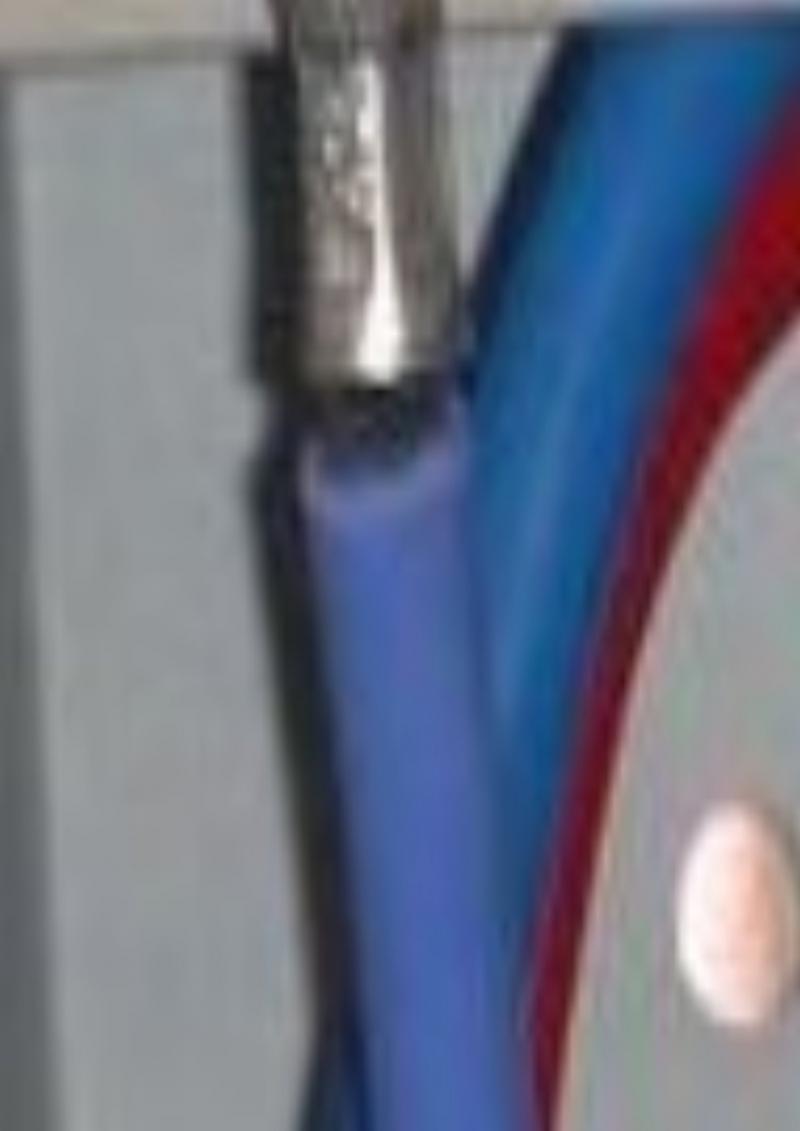Few days back, I posted this:
//www.diynot.com/forums/electrics/how-does-my-diy-effort-at-a-consumer-unit-look.311484
Following on from some helpful comments I've had another go:
- Biggest change was putting the earthing banjo on the SWA gland. Note it does have the black plastic shroud on too, I just removed it temporarily to show the SWA termination.
- I rerouted the incoming earth which made life a lot easier, and a bit neater
- Couldn't get less than 100m of sleeving so I've just left the mix of old and new colours, but I've put the sticker on the cover warning people
- I've left the 20A MCB dedicated 'ring' (two connections of 2.5sqmm T&E) for now, even though people thought it was odd, as it just seems silly to take it out and put the extra strain on just one cable.
- Incoming is definitely three 25sqmm incoming cores, in SWA.
Will probably get it checked by Building Control electricians at the end of the week. Anyone want to shoot me down before then?
//www.diynot.com/forums/electrics/how-does-my-diy-effort-at-a-consumer-unit-look.311484
Following on from some helpful comments I've had another go:
- Biggest change was putting the earthing banjo on the SWA gland. Note it does have the black plastic shroud on too, I just removed it temporarily to show the SWA termination.
- I rerouted the incoming earth which made life a lot easier, and a bit neater
- Couldn't get less than 100m of sleeving so I've just left the mix of old and new colours, but I've put the sticker on the cover warning people
- I've left the 20A MCB dedicated 'ring' (two connections of 2.5sqmm T&E) for now, even though people thought it was odd, as it just seems silly to take it out and put the extra strain on just one cable.
- Incoming is definitely three 25sqmm incoming cores, in SWA.
Will probably get it checked by Building Control electricians at the end of the week. Anyone want to shoot me down before then?


